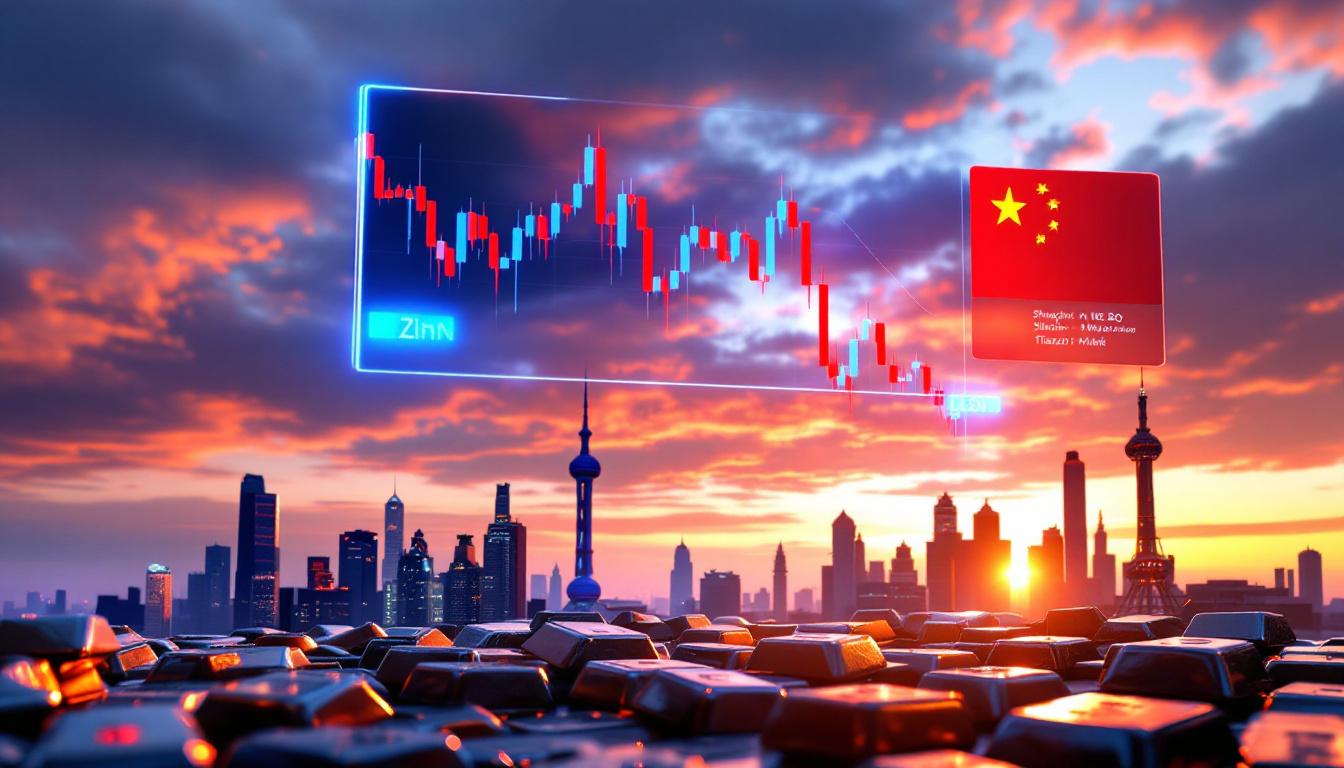What Happened During the Recent US-China Trade Negotiations in London?
The latest round of high-stakes trade discussions between the United States and China took place in London on June 10-11, 2025, marking a significant development in the ongoing economic relationship between the world's two largest economies. These talks represented the second formal round of negotiations since the relationship entered a new phase of tension around critical supply chains.
Unlike previous negotiations that primarily focused on tariff levels and trade balances, these discussions centered on strategic resources—particularly rare earth elements—and their role in global supply chains. What made these talks particularly noteworthy was the attendance of commerce ministers alongside traditional trade officials, signaling the elevated importance both nations placed on the meetings.
Key Meeting Details and Participants
The London negotiations brought together high-ranking officials from both nations in a closed-door format that maintained strict confidentiality throughout. While the specific participants weren't publicly identified in official statements, the presence of commerce ministers represented an escalation in diplomatic engagement compared to previous working-level discussions.
The talks focused primarily on rare earth elements (REEs)—a group of 17 minerals critical for technologies ranging from smartphones and electric vehicles to advanced defense systems. China currently controls approximately 85% of the global processing capacity for these elements, according to the U.S. Geological Survey's 2024 assessment.
Notably, the discussions maintained a strictly closed-door format with no media access, suggesting the sensitivity of the topics under discussion. This level of secrecy aligns with China's historical approach to rare earth policy discussions, which it considers matters of national security.
The Unusual Silence Following the Talks
Perhaps the most telling aspect of the London negotiations was what didn't happen afterward. Traditionally, even tense diplomatic engagements conclude with brief statements or minimal joint communiqués. However, following these discussions, both delegations maintained remarkably tight-lipped positions, offering no joint statements or individual briefings to the media.
This strategic silence represents a departure from typical diplomatic protocol where at least minimal updates are shared. According to Tao Dong, analyst at Springs Capital, this silence itself constitutes "a meaningful diplomatic signal that negotiations have reached a particularly sensitive stage" (New Economist, June 15, 2025).
The lack of transparency has fueled speculation in diplomatic circles and financial markets alike. As one commentator noted in the South China Morning Post, "When negotiators say nothing at all, they're often saying everything about the complexity of what's being discussed."
This silence follows a historical pattern established during the 2010 diplomatic standoff between China and Japan, when China restricted rare earth exports during territorial disputes but never officially acknowledged doing so—demonstrating how rare earth policy often operates in diplomatic shadows.
How Has the Power Balance Shifted in US-China Trade Relations?
The London talks revealed a fundamental shift in the power dynamics between the two economic giants. Previous rounds of trade negotiations, particularly during 2018-2019, positioned the United States as the more aggressive party, wielding tariffs and market access as primary leverage. However, the recent discussions demonstrate a more balanced—or potentially reversed—negotiating landscape.
China's Strengthened Negotiating Position
China has transitioned from a defensive posture to a more assertive stance in these negotiations, leveraging its dominance in critical minerals energy transition. This shift stems from several factors that have strengthened Beijing's hand:
-
Resource dominance: China controls 85% of global rare earth processing capacity, creating significant leverage in negotiations with technology-dependent nations (USGS, 2024).
-
Strategic consolidation: China's "rare earths consolidation" policy (State Council, 2023) has centralized control of the sector under state supervision, allowing more coordinated export policies.
-
Economic resilience: China's 2024 GDP growth reached 4.5% compared to the US at 2.1% (IMF, 2025), providing greater economic cushioning against trade disruptions.
-
Supply chain alternatives: China has systematically developed alternative suppliers for US products through investments in Africa, Southeast Asia, and Latin America, reducing dependency on American imports.
-
Domestic policy adjustments: Beijing's "dual circulation" economic strategy has reduced dependence on exports while building domestic consumption, creating additional negotiating advantages.
As Tao Dong observed, "China is negotiating from a position of strength, having identified and targeted critical chokepoints in technology supply chains where its leverage is maximized."
The US Recalibration Strategy
The United States has been forced to recalibrate its approach in response to these shifting dynamics. Key elements of this strategy include:
-
Supply chain focus: Moving beyond tariff-centered negotiations to emphasize supply chain security and resilience, particularly for critical minerals and technology components.
-
Domestic investment: The Department of Energy's $30 million grant program for domestic rare earth processing (DoE, 2024) represents efforts to reduce dependency on Chinese suppliers.
-
Alliance building: Coordinating with allies such as Australia, Japan, and the European Union to create alternative supply chains and strengthen collective bargaining positions.
-
Sector-specific approaches: Engaging specific commercial interests beyond traditional trade sectors, particularly in advanced manufacturing and clean energy technologies.
-
Strategic minerals initiatives: Prioritizing access to critical mineral resources through partnerships with countries like Australia (Lynas Corp) that can supply defense contractors (Reuters, 2024).
This recalibration reflects a growing recognition that previous negotiation tactics based on tariff threats have reached their limits, especially when confronting China's strengthened position in critical supply chains.
What Are the New Battlegrounds in the Trade Relationship?
The evolving US-China trade relationship has moved beyond traditional concerns like tariff levels and market access to focus on strategic vulnerabilities in global supply chains. This shift represents a fundamental change in how economic competition between the powers manifests.
Beyond Tariffs: Supply Chain Vulnerabilities
While tariffs dominated previous trade discussions, the new focus centers on identifying and controlling critical chokepoints in global supply networks:
-
Export controls: Both nations are implementing increasingly sophisticated export restrictions targeting each other's technological vulnerabilities.
-
Critical minerals: Resources essential for advanced manufacturing have become central to trade tensions, with particular focus on minerals needed for clean energy and defense.
-
Technology independence: Each side is pursuing strategies to reduce dependency on the other's technological ecosystems, creating parallel supply chains.
-
Manufacturing resilience: Companies face pressure to diversify production locations to hedge against political risks in either market.
-
Standards competition: Technical standards for emerging technologies have become contested territory as both nations seek to shape future industries.
These shifts reflect deeper recognition that economic security encompasses more than trade balances—it requires secure access to the components that enable modern industry to function.
Rare Earth Elements as Strategic Leverage
Rare earth elements have emerged as the central point of contention in the new trade landscape. These 17 minerals play an outsized role in modern technology despite their relatively small market size:
-
Market dominance: China's control of 85% of global processing capacity creates structural leverage in negotiations.
-
Critical applications: 90% of permanent magnets for electric vehicles and wind turbines rely on rare earth elements (International Energy Agency, 2024).
-
Defense implications: US military systems including F-35 fighters, missile guidance systems, and radar technologies require rare earth components, with approximately 80% of defense-related rare earth imports coming from China (Department of Defense, 2023).
-
Processing challenges: Rare earth refining produces toxic waste and requires specialized facilities, limiting Western capacity to quickly develop alternatives (MIT Technology Review, 2023).
-
Historical precedent: China previously restricted rare earth exports to Japan in 2010 during territorial disputes, demonstrating willingness to use these resources as diplomatic leverage (BBC, 2010).
"Rare earths aren't actually rare in the ground—they're rare in terms of processing capacity outside China. This processing bottleneck creates strategic vulnerability that's difficult to resolve quickly." — Jane Nakano, Center for Strategic and International Studies (April 2025)
The United States has attempted to address this vulnerability through investments in domestic production, with MP Materials' Nevada mine now supplying approximately 15% of global rare earth materials (Bloomberg, 2024). However, processing capacity remains limited, creating ongoing dependence on Chinese supply chains.
What Are Expert Analysts Saying About the London Talks?
The London negotiations have generated significant commentary from trade experts, economists, and geopolitical analysts, offering diverse perspectives on the implications and potential outcomes of these discussions.
Tao Dong's Assessment of a Tactical Turning Point
Tao Dong, a respected analyst at Springs Capital, has identified the London talks as a potential inflection point in US-China trade war strategies. His analysis highlights several key observations:
-
Power rebalancing: "These negotiations mark the first time China has entered trade talks with the US from a position of comparable strength rather than defensive posture."
-
Strategic preparation: "China's hardball tactics around rare earth export controls appeared to catch the US delegation off guard, suggesting asymmetric preparation levels."
-
Focus shift: "The focus has decisively moved from tariffs to export controls, reflecting a deeper understanding of supply chain vulnerabilities on both sides."
-
Negotiation dynamics: "The unusual silence following the talks indicates exceptionally sensitive discussions where neither side achieved clear dominance."
This assessment points to a tactical realignment where China has successfully leveraged its resource advantages to create more balanced negotiation dynamics compared to previous rounds.
Other Expert Perspectives and Predictions
Beyond Tao's insights, other analysts have offered complementary perspectives:
-
Market response: The S&P 500 dropped 1.2% following the inconclusive talks (CNBC, June 12, 2025), reflecting investor uncertainty about the trade relationship's trajectory.
-
Diplomatic signals: According to Chatham House analysis (June 2025), "The absence of joint statements suggests fundamental disagreements remain unresolved, with sectoral mini-deals likelier than comprehensive resolution."
-
Supply chain implications: The Peterson Institute for International Economics notes that "silent diplomacy carries significant risks for global supply chains, as businesses cannot plan effectively without policy clarity."
-
Political considerations: Domestic politics in both countries constrain negotiators, with the Trump administration's executive order on critical minerals emphasizing supply chain security as a non-negotiable priority.
-
Timeline expectations: Most analysts project continued negotiations through 2025, with the next formal talks expected in Q3 according to trade policy experts.
The diversity of expert perspectives reflects the complexity of the issues at stake and the difficulty in predicting outcomes when critical supply chains hang in the balance.
How Might These Negotiations Impact Global Trade?
The ongoing trade tensions between the United States and China extend far beyond bilateral relations, with significant implications for global trade patterns, investment flows, and economic security.
Immediate Market Reactions and Uncertainty
The inconclusive nature of the London talks has generated immediate consequences for businesses and investors worldwide:
-
Market volatility: Key indices experienced fluctuations following the talks, with technology stocks particularly affected due to rare earth dependencies.
-
Business planning challenges: Companies with exposure to US-China trade face difficult strategic decisions without clear policy direction.
-
Supply chain anxiety: Procurement managers are accelerating contingency planning for potential disruptions to critical mineral supplies.
-
Price impacts: Rare earth prices have seen increased volatility, with the global market projected to reach $25 billion by 2030 (Reuters, 2024).
-
Investment hesitation: Capital allocation decisions for manufacturing facilities are being delayed as companies await greater policy clarity.
This uncertainty creates a drag on global economic efficiency as resources are diverted to redundancy and risk management rather than productivity enhancement.
Long-term Global Economic Implications
Beyond immediate market reactions, several structural shifts in the global economy appear to be accelerating:
-
Supply chain regionalization: Companies are increasingly organizing production networks around regional blocs aligned with either the US or China.
-
Third-country positioning: Nations with economic ties to both powers face difficult choices, as evidenced by Vietnam's surge in rare earth mining to position itself as an alternative supplier (Nikkei Asia, 2024).
-
Resource nationalism: More countries are designating critical minerals as strategic assets, following models like the EU Critical Raw Materials Act (2023).
-
Innovation consequences: Research collaboration across borders is becoming more difficult, potentially slowing technological advancement in certain fields.
-
Trade governance challenges: The World Trade Organization faces strain as disputes like China's 2023 complaint over US semiconductor restrictions (WTO DS609) test its relevance in technology-centered trade conflicts.
"We're witnessing the beginning of a fundamental restructuring of global supply chains around competing technology spheres. This isn't temporary friction—it's a new economic architecture emerging." — Jane Nakano, CSIS (April 2025)
These long-term implications suggest that even if the current negotiations reach some form of resolution, the global trading system has entered a new phase where strategic security concerns increasingly shape economic relationships.
What Could Happen Next in US-China Trade Relations?
As both nations digest the outcomes of the London talks, several potential scenarios and key indicators may signal the future direction of US-China trade relations.
Potential Scenarios and Timelines
Trade experts and diplomatic analysts suggest several plausible trajectories for the relationship:
-
Sectoral mini-deals: Rather than comprehensive resolution, targeted agreements in less sensitive sectors could emerge as a pragmatic compromise.
-
Silent implementation: Policy changes might occur without formal announcements, allowing both sides to adjust practices without public concessions.
-
Escalation cycle: New restrictions on technology transfer or critical minerals could trigger reciprocal actions, potentially spiraling into broader economic confrontation.
-
Multilateral engagement: Issues might be channeled through third-party forums like the G20 or WTO to provide face-saving mechanisms for compromise.
-
Extended stalemate: The status quo of strategic ambiguity might persist, with businesses adapting to uncertainty as the new normal.
Timeline considerations suggest continued engagement through diplomatic channels, with the next formal talks expected in Q3 2025. However, the Atlantic Council's 2025 US-China trade forecast notes that "electoral cycles in both countries create windows of both opportunity and constraint for negotiators."
Indicators to Watch for Direction
Several key indicators may provide early signals about the trajectory of the relationship:
-
Official statements: Carefully worded comments from trade ministries often contain subtle signals about negotiation progress.
-
Regulatory adjustments: Changes to export control regulations or investment screening processes may indicate policy direction before formal announcements.
-
Business decisions: Major investment commitments or supply chain relocations by multinational corporations often reflect inside information about diplomatic trends.
-
CFIUS approvals: The Committee on Foreign Investment in the United States approval rates for Chinese investments serve as a barometer for the relationship (Treasury Department data).
-
Third-country positioning: How nations like Australia, Japan, and European powers align their critical minerals policies may signal broader coalition-building efforts.
These indicators provide a dashboard for monitoring developments between formal negotiation rounds, helping businesses and policymakers anticipate shifts in the relationship.
FAQ: Understanding the US-China Trade Tensions
Why are rare earth elements so important in these negotiations?
Rare earth elements have emerged as a central focus because they represent a critical vulnerability in advanced technology supply chains. These 17 minerals are essential components in technologies ranging from smartphones and electric vehicles to military equipment.
China controls approximately 85% of global processing capacity (USGS, 2024), creating significant leverage in negotiations with technology-dependent nations like the United States. Despite their name, these elements aren't particularly rare in the earth's crust, but processing them requires specialized facilities that generate toxic byproducts, making rapid capacity expansion outside China challenging.
The defense implications are particularly significant—approximately 80% of rare earth materials used in US defense applications come from China-connected supply chains (Department of Defense, 2023), creating national security concerns that transcend normal trade considerations.
How do these talks differ from previous US-China trade negotiations?
The current negotiations represent a fundamental shift from earlier trade discussions in several key respects:
-
Power dynamics: Previous negotiations (particularly during 2018-2019) featured the US in a more dominant position leveraging tariff threats, while current talks reflect a more balanced power relationship.
-
Focus areas: Earlier talks centered primarily on tariff levels, intellectual property protection, and market access, while current discussions prioritize supply chain security and critical resource access.
-
Strategic depth: Both sides now demonstrate greater sophistication in targeting specific vulnerabilities rather than broad economic pressure.
-
Public communication: The unusual silence following these talks contrasts with the more public positioning that characterized previous negotiations.
-
Technological context: Emerging technologies like artificial intelligence, quantum computing, and clean energy have heightened the stakes around supply chain security.
These differences reflect the evolution of the relationship from primarily commercial competition to more comprehensive strategic rivalry.
What industries could be most affected by the outcome of these talks?
Several sectors face particular exposure to US-China trade tensions around rare earth elements and critical minerals:
-
Clean energy: Electric vehicle manufacturers and renewable energy equipment producers rely heavily on rare earth components for motors, batteries, and generators. The International Energy Agency notes that 90% of permanent magnets for EVs and wind turbines use rare earth elements (IEA, 2024).
-
Advanced electronics: Smartphone and computer manufacturers face potential disruptions to component supplies, particularly for specialized semiconductors that require gallium (95% of which comes from China according to USGS, 2024).
-
Defense contractors: Military systems including guidance systems, radar technologies, and communications equipment depend on reliable access to specialized materials.
-
Medical technology: Advanced imaging equipment and certain precision medical devices incorporate rare earth components in their designs.
-
Automotive manufacturing: Beyond electric vehicles, modern conventional vehicles contain numerous electronic systems using rare earth components.
Companies
Want to Be Ahead of the Next Major Mineral Discovery?
Discovery Alert's proprietary Discovery IQ model instantly identifies significant ASX mineral discoveries, turning complex data into actionable investment insights before the broader market recognises the opportunity. Explore how previous discoveries have generated substantial returns by visiting the Discovery Alert discoveries page and position yourself for market-leading advantage with your 30-day free trial.




